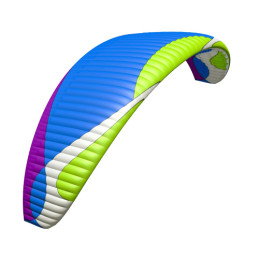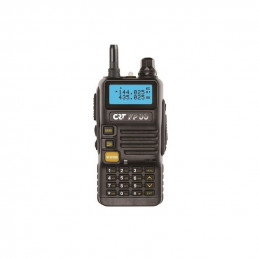Hike and Fly, or rando-paragliding, is an exhilarating way to blend two passions: hiking and free flight. This discipline allows you to reach remote launch sites, often inaccessible by road, and then soar to new horizons. Here's everything you need to know to prepare for your first hike-and-fly adventure.
Selecting the Right Gear
The Wing:
- Weight and Compactness: Opt for a lightweight wing, typically weighing between 2 to 3 kg. Hike-and-fly wings are designed to be smaller and lighter, making them easier to carry.
- Performance: An EN-A or EN-B wing is recommended for beginners, ensuring safety and enjoyment.

The Harness:
- Lightness: Choose a lightweight harness, preferably one that converts into a backpack for the trek.
- Comfort: Make sure it's comfortable for hiking as well as for flying.
Other Equipment:
- Light Helmet: A paragliding helmet that doesn't weigh too much but provides adequate protection.
- Vario: A lightweight variometer to inform you about air movements.
- Safety Gear: A rescue parachute, light carabiners, and a VHF radio for communication.
Physical Preparation
- Endurance: Hike-and-fly can involve long hikes with elevation gain. Train with mountain hikes while carrying a backpack loaded to simulate your gear's weight.
- Strength and Flexibility: Strength exercises, especially for legs and back, will help prevent injuries. Yoga or regular stretching will enhance your flexibility.

Weather Knowledge
- Understanding the Weather: Learn to read weather maps, identify favorable thermal conditions, and anticipate storms. Weather can change rapidly in the mountains.
- Weather Tools: Use specialized apps or websites to check local forecasts and real-time conditions before setting out.
Planning Your Adventure
- Choosing Your Spot: Look for launch sites accessible by foot that offer good flying conditions. Local paragliding groups, forums, and specialized guides can help you choose.
- Safety: Let someone know your route and estimated return time. Consider your flight plan: where will you land, are there emergency landing options?
- Additional Gear: Bring extra clothing for changing conditions, high-energy food, and enough water.
Practical Tips
- Test Your Equipment: Before embarking on a long adventure, do one or two flights with your hike-and-fly gear to ensure everything works well together.
- Weight Management: Every gram counts. Think about what's essential and what can be left at home.
- Mental Preparation: Hike-and-fly can be solitary and demanding. Prepare yourself mentally to handle unexpected situations with calm and determination.

Hike-and-fly opens up a world of pure adventure, where each step brings you closer to the sky. With the right preparation, you can enjoy this unique experience that combines physical effort, natural beauty, and the freedom of flight. Gear up well, respect nature, and let the wind carry you away.
Feel free to email us if you need advices on your first light gear !

















